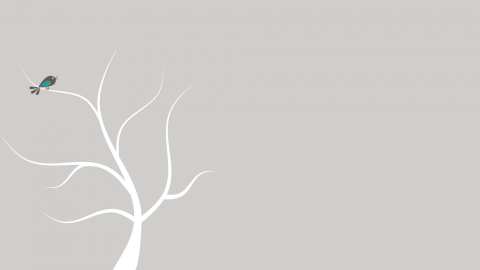Causes of OCD
There has been a good deal of research carried out over the past few years regarding the causes of OCD. It has been speculated that there might be several kinds of OCD and that, in particular, OCD that starts in childhood may be different from that which begins in adulthood.
Chemical and brain dysfunction
One cause that is gaining ground concerns the probability that there is a level of brain dysfunction in many OCD sufferers.
This does not mean that people with this problem have damaged brains or that their reasoning functions are inferior to those who do not have OCD.
The chemical messenger, Seretonin seems to be heavily involved. Seretonin is a chemical called a neurotransmitter that allows nerve cells to communicate with each other by working in the space between nerve cells, called the synaptic cleft. According to research, Seretonin is involved with biological processes such as mood, aggression, sleep, appetite and pain. It also seems that Seretonin is capable of connecting to nerve cells in the brain in many different ways and so can cause many different responses. It is not even fully established if it is all or part of the Seretonin chemical or another chemical entirely acting on it; or a malfunction in one or more of the receptors in the brain that Seretonin attaches to that causes the OCD problems.
Brain scans have also shown that people with OCD often have abnormalities within the brain, particularly in the orbital cortex (the part of the brain above the eyes) and in deeper structures such as the Basal Ganglia and Thalmus. This research suggests that the communication between these parts of the brain is not functioning correctly. Basically, when anxiety rises in the OCD sufferer, a circuit of inappropriate response happens between these parts of the brain.
As the deeper, primitive part of the brain is not the part that is involved with reasoning, it is not possible to ‘talk yourself’ out of an over response. As the various parts of the brain have different levels of priority and urgency, the ‘message’ being sent can cause great confusion to the reasoning brain, the Cortex.
For example, the Thalmus processes sensory images coming to the brain from the rest of the body, while the Caudate Nucleus, part of the Basal Gangli in the centre of the brain controls and sorts sensory information and does thought filtering. When these messages are being misinterpreted, ‘misfiring’, the thinking part of the brain is naturally confused and is responding chemically to a threat perceived by the primitive, non-reasoning part of the brain with rational doubt of the threat’s danger, but a major need to response as if the danger is real. In effect, the Caudate Nucleus is letting unnecessary thoughts and impulses through to the Cortex where the thoughts and emotions combine; and an over active Cingulate Nucleus at the brain’s centre, which helps shift attention from one thought or behaviour to another, becomes over active and gets stuck on certain behaviours, thoughts or ideas. The Cingulate is that part of the brain which tells the OCD sufferer that something terrible will happen if the compulsions are not carried out.
So, with the Thalmus sending messages that makes this person very (probably very uncomfortably) aware of everything around him or her and the Caudate Nucleus opening the floodgates to intrusive thoughts, the Cortex is perceiving major problems that feed in to the ‘fight or flight’, or major danger response. The Cingulate Gyrus then demands that compulsions are carried out to relieve the terrible anxiety feelings.
- It can be seen from this that, trying to ‘think’ oneself free of ocd within the problem and using the problem’s own parameters, is not a reasonable option.
- It is important to be able to differentiate between what the primitive and rational brains are saying is the true situation.
- Bear in mind that the part of the brain responsible for ocd, functions very much on the same emotional level as that of a two year old. Reasoned argument is, therefore, pointless.
Within the groups, we sometimes talk about the OC response as a huge two-year-old. It cannot be reasoned with, but it demands notice and is powerful enough to insist. Then, as with any irrationally demanding two-year-old, one has to use techniques to win it round or divert its needs. To this end, gradually increasing exposure to the problem may be used, but it should never be forgotten that this OC response is not malign, it means no harm, but it cannot be reasoned with intellectually. So anyone experienced in dealing with small children might usefully include these child-teaching techniques, or appropriate versions of them, as part of a recovery programme. Common sense is a very useful tool in combating OCD.
Genetics
Some research points to the likelihood that OCD sufferers will have a family member with the problem or with one of the other ‘OCD –Spectrum’ of disorders. These are, body dysmorphic disorder (excessive concern about minor or imagined defects in appearance), hypochondriasis (fear of having a serious disease despite tests and reassurance by medical professionals), binge eating and trichotillamonia (pulling out scalp hair, eyebrows, eyelashes, body hair, even that of others such as children or pets). However the possibility that it is inherited genetically is not conclusive. It does not follow, for example, that identical twins will both have OCD (although there is an increased chance), so genetics cannot be entirely to blame.
One American study suggested that up to 30% of teenagers with OCD had a member of the immediate family with the problem or with obsessive symptoms. Other studies tend to suggest that if a sufferer’s OCD began in adulthood there is less chance of this person’s offspring contracting it than if the problem was contracted in childhood, specifically if the latter is the type of OCD that tends to start in childhood (if there are different types).
Other research suggests that if one parent has OCD the chances of the child having it are between 2% and 8%. Here again, if the parent has family members with the problem, the chances of the child contracting it increase and if the parent has no family history of OCD, they decrease. A point to bear in mind concerning children is that OCD can involve increased stress and poor eating habits, particularly if the problem relates to food. Children with OCD might then not do too well physically and be prone to stress related problems like headache and upset stomach.
Infection
A streptococcal infection of the throat is known to occasionally result in the body confusing healthy cells with the infection and causing cellular damage. If this has happened with the brain, the body’s infection fighting system can attack the outside of nerve cells in the Basal Ganglia part of the brain with the result that OCD symptoms occur. Some research suggests that these symptoms don’t seem to last very long and the occurrence of this ‘infection OCD’ seems to be very rare.
‘Strep throat’ is a specific infection usually found in children, and a general ‘sore throat’ does not mean this infection is present. Symptoms of strep vary a lot but can include a bright red throat, high fever, tender and swollen lymph nodes under the jaw, ear pain, white pus on the tonsils and dark red spots on the back of the throat. Blocked or runny nose is not usually present and some children hardly get any symptoms. Scarlet fever is one form of strep infection and in this case there will be a fine red rash on the body, probably starting with the upper body. Strep infection can also lead to rheumatic fever or kidney problems when not treated. Penicillin seems to be the treatment of choice at present.
If OCD results from a strep throat infection, the symptoms seem to start quickly, probably within one or two weeks.
Depression
People with depression sometimes develop OC symptoms, and those with OCD very often develop depression. Dealing with both together is very difficult without clinical intervention and it is notoriously difficult to undertake an exposure programme while the depression is high.
Psychodynamics
This is the theory that states that disturbances in early sexual or general development and unconscious wishes are at the heart of OCD. Regarding development, the theory is that conflict between the thinking and reasoning part of the mind and the part that wants it’s own way is dealt with in an unstable way by the child and that causes mental problems in later life. An example might be a compulsive checker of taps who, according to this theory, wanted to flood the house as a child. With unconscious wishes, the theory could be that, for example, the person who fears running over people in his car really wants to do this. To keep the awareness out of his consciousness he uses a huge amount of energy which gives the thought an obsessional quality.
These theories are not given much weight nowadays, although it is always useful to be aware of the role of guilt feelings in OCD.
Life
Guilt and shame seem to occur strongly in some people’s OCD, particularly that of young people. ‘Tendency’ also seems to play a large part in this disorder, as in children inheriting a disposition towards OC problems or learning anxiety and guilt from parents or ‘significant other’ people in their lives. Why some people have a tendency towards neurosis and others don’t is very difficult to say.
Children tend to feel guilt about their natural needs from a very early age and it can be said that guilt and feeling over-responsible is endemic to obsessive people of our culture. This will be looked at in more detail in two further leaflets in this series: ‘Guilt and Shame’, and ‘Obsessional Thinking’.
The cause of OCD is probably a mix of many factors described above, including neurobiological, environmental influences and the way we think.
This article is for information only and should not be used as a definitive or medical appraisal of the causes of OCD. It is also a non-profit publication.
Help Anxiety Care to Help You!
Find out how you can make a donation to Anxiety Care.


